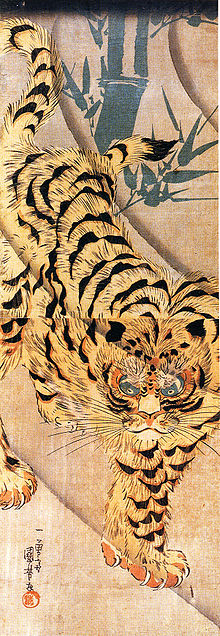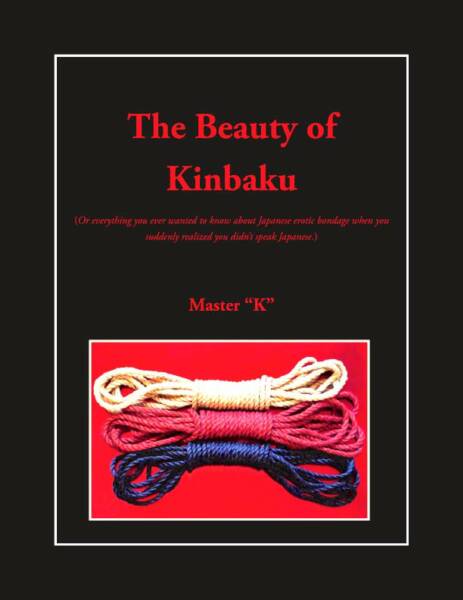The Beauty of Kinbaku
Or everything you always wanted to know about Japanese erotic bondage when you suddenly realized that you didn't speak Japanese
(December 18, 2008)
If my 2005 review declared the now out of print "Shibari, the Art of Japanese Bondage" (Master "K", Secret Press, 2004) to be a feast for the eyes, then surely "The Beauty of Kinbaku" (Master "K", King Cat Ink, 2008) is a banquet for the soul - a much needed beacon in a world of marketing and facsimile. Cheers and congratulations to Master "K" and the reader. Only available at www.thebeautyofkinbaku.com, "The Beauty of Kinbaku" is the culmination of 30 years research and 4 years writing, and exemplifies a passion that we in the rope community, sometimes in our own non- traditional or stylized ways, share with Master "K".
I'm not sure how your copy will arrive, but my review copy arrived beautifully wrapped in folded tissue paper with a golden 'K' seal, reminiscent of traditional Japanese gifts in shops on my last visit to Tokyo, and came with an attractive and interesting companion bookmark. Kudos and thanks for this. It's a detail not lost on many of us, and the wonderful hardcover book has a picture of three "staged" jute rope bundles you can all but smell and feel.
This beautiful and illuminating hardcover book is 192 pages and includes a gorgeous and oft surprising 109 plate color photo gallery of kinbaku and shibari-patterned ropecraft by Master "K", a glossary of Japanese terms and bondage names, an extensive bibliography which highlights the breadth and depth of Master "K"'s library, and 79 pages revealing, clarifying, and correcting the West's view of the history, art, and evolution of Kinbaku and shibari. This includes a section on 25 key people who helped shape shibari and kinbaku in Japan and helped bring this beautiful art to the western world (a historical/evolutionary biographical roadmap of sorts, including: Osada Eikichi, Akechi Denki, Yukimura Haruki, Nureki Chimuo, and Osada Steve, as well as Itoh Seiyu, Nawa Yumio, and Ozuma kaname). The book also has a brief how-to section providing instruction for three classic shibari/kinbaku patterns: an easy early period takate-kote shibari and agura shibari, and a simple hishi shibari single-rope variant, a "teaching hishi" if you will, similar to the one I first learned from Midori in 2003 and has Takeshi Nagaike as part of it's lineage. The history includes ample discussion of hojojutsu, jute vs hemp rope, shunga, seme-e, Kabuki, Iirezumi, SM, the Kitan Club, and the four legal Edo-period methods of torture.
A comprehensive, educational, and stimulating read that also looks good on the coffee (or tea) table.
Cheers & enjoy,
Steve
Steve Indands


